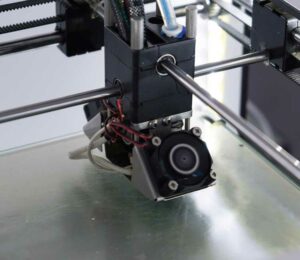State of Dental 3D Printing Technology
Even for the technically savvy, the concept of three-dimensional (3D) printing is mind-boggling, especially when you consider the scale and myriad applications suited to this technology: It has been said that everything from houses to heart valves can be created on a 3D printer.

Even for the technically savvy, the concept of three-dimensional (3D) printing is mind-boggling, especially when you consider the scale and myriad applications suited to this technology: It has been said that everything from houses to heart valves can be created on a 3D printer. Given these developments, it’s no wonder the number of dental applications is increasing — fueled in part by the rapid-fire introduction of biocompatible 3D printing materials that support new treatment options.
For insights into the current — and future — state of dental 3D printing, we turned to Cord F. Stähler, MS, PhD, senior vice president and chief technology officer for Dentsply Sirona, a company that looks to become a major innovator in this market segment and hopes to accelerate its widespread adoption. A key driver in its acceptance, he says, is the trend of making digital processes, including 3D printing, more simplified, automated and predictable. “For example, digital workflows and related technologies, including 3D printers, facilitate the fabrication of patient-specific appliances, restorations and similar products at lower cost,” Stähler reports, “which makes these processes profitable, too.”
Pointing to the time-savings of producing appliances in-house, he notes the additional advantage that simpler software and workflows allow dentists to delegate many design, manufacturing, and postproduction tasks to their teams. Stähler attributes this capability to innovations in “intelligent’ software and automated printing and post-processing that make 3D printing even more accessible. He also emphasizes the marketing advantages of this technology, as patients perceive they are being treated with the highest standards of care and “are in the right place.” That’s added value for dentists who bring 3D printing in-house.
When workflows are properly implemented, “one cog meshes with another and this leads to reliable and repeatable results,” Stähler says. “Standardization helps prevent errors. As processes become simplified, they are easier to control — which increases the safety and quality of care.” This trend will be key in making 3D printing a mainstream service offering.
Noting that a “seamless, integrated workflow is not guaranteed” in every dental setting, Stähler suggests companies need to do a better job of resolving these stumbling blocks by creating more efficient digital ecosystems. “The industry should take a closer look at how providers can become more productive, accurate, collaborative and connected,” he says. “This will ensure dentists have more time to connect with patients and deliver quality care.”
While splints, surgical guides and models are common indications for dental 3D printing, recent developments in biocompatible materials are expanding applications into not only interim prostheses, but also definitive restorations — the latter just now becoming a reality in clinical practice. Perhaps more than any single impetus, this development is poised to encourage broad adoption by dentists. What’s more, ongoing innovations in 3D printing materials will lead to new indications, allowing offices to further expand 3D-rendered therapy.
As advances in 3D printing and similar technologies help raise the level of care, this is an exciting time for dental professionals, Stähler asserts. “The trend of automating and streamlining design, fabrication and postproduction processes reduces chairtime, allows delegation to trained team members, and supports maximum production,” he says. This leads to faster turnarounds, improved care, and, ultimately, greater profitability. And that’s reason enough to consider dental 3D printing not as the promise of the future, but a tangible and productive reality in today’s progressive practice.
From Decisions in Dentistry. May 2022;8(5):46.


